Abstract
The seasonal dynamics of larval populations of Aedes aegypti was studied in two different biotopes in Dar es Salaam, Tanzania. The first biotope was located on the Msasani peninsula on the coast 6 km north of Dar es Salaam, where A. aegypti breeds exclusively in coral rock holes. The population dynamics was studied during both the rainy and the dry season. Seasonal changes in the density of A. aegypti larvae depend primarily on variation in rainfall. The population of larvae dropped to zero only for a short time during the driest period while the adult population was maintained at a low level. The second biotope was in an automobile dump in a Dar es Salaam suburb, where A. aegypti breeds in artificial containers such as tires, automobile parts, tins, coconut shells, and snail shells. The greater part of the A. aegypti population of this biotope is maintained in the egg stage during the dry season. It serves as a focal point for breeding during the dry season: with the coming of the rains, the population expands into the surrounding residential areas. More than 70% of the larval population developed in tires, 20% in tins, 5% in coconut shells, and 1% in snail shells.
Full text
PDF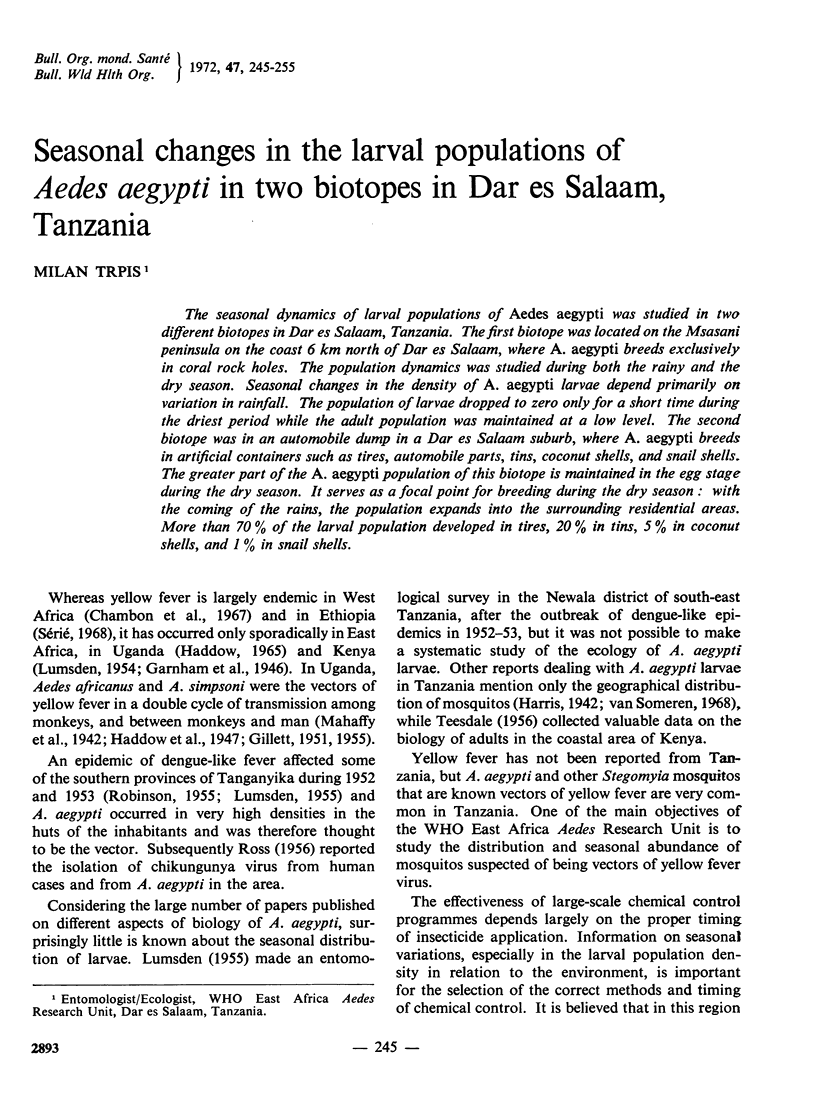
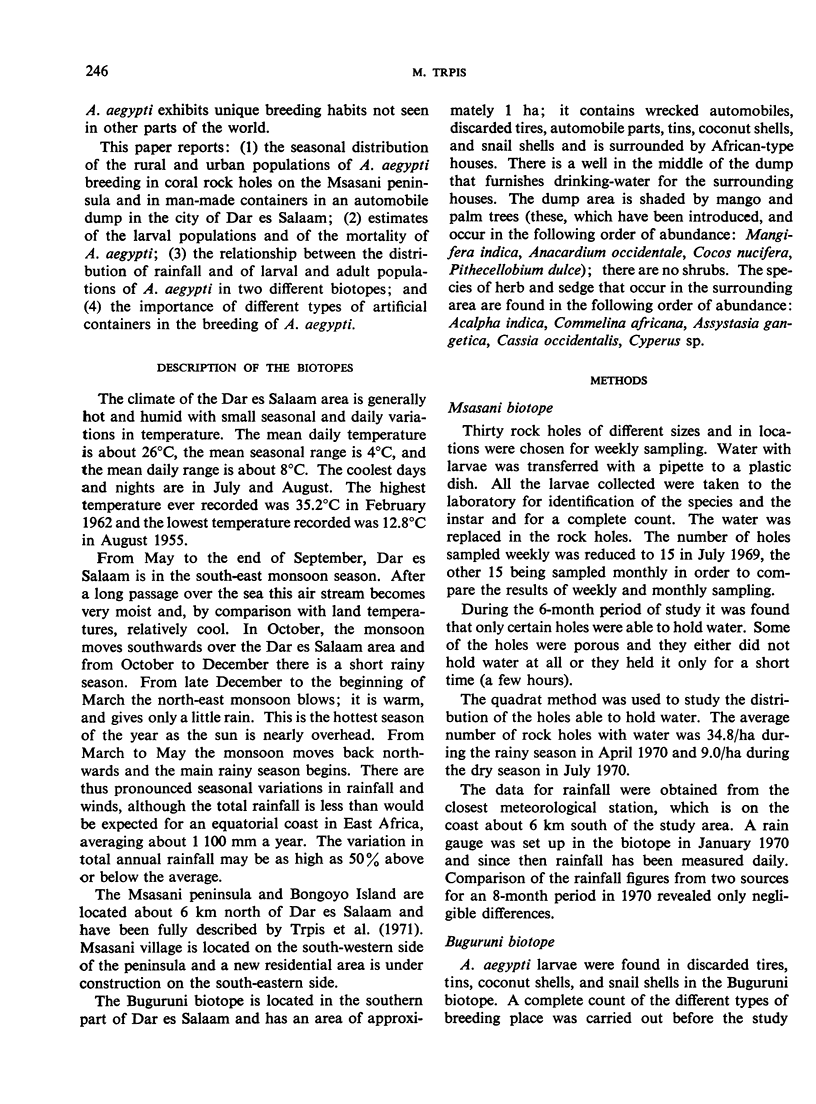
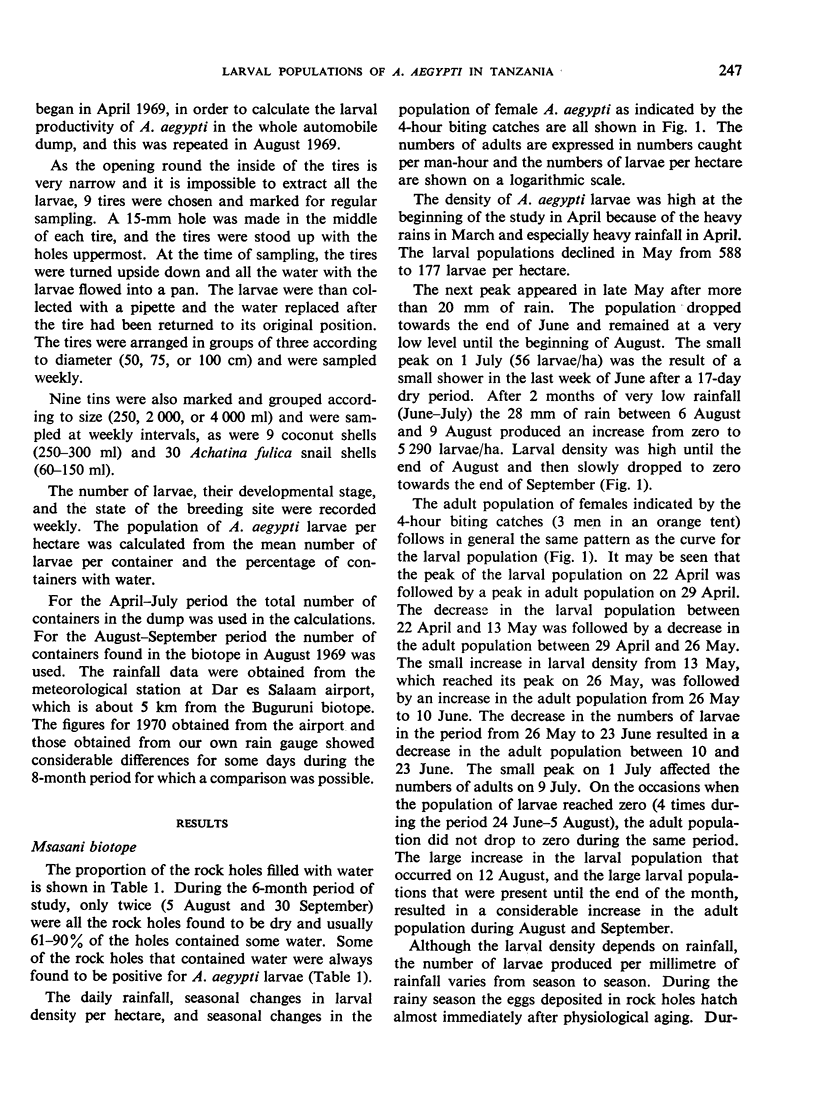
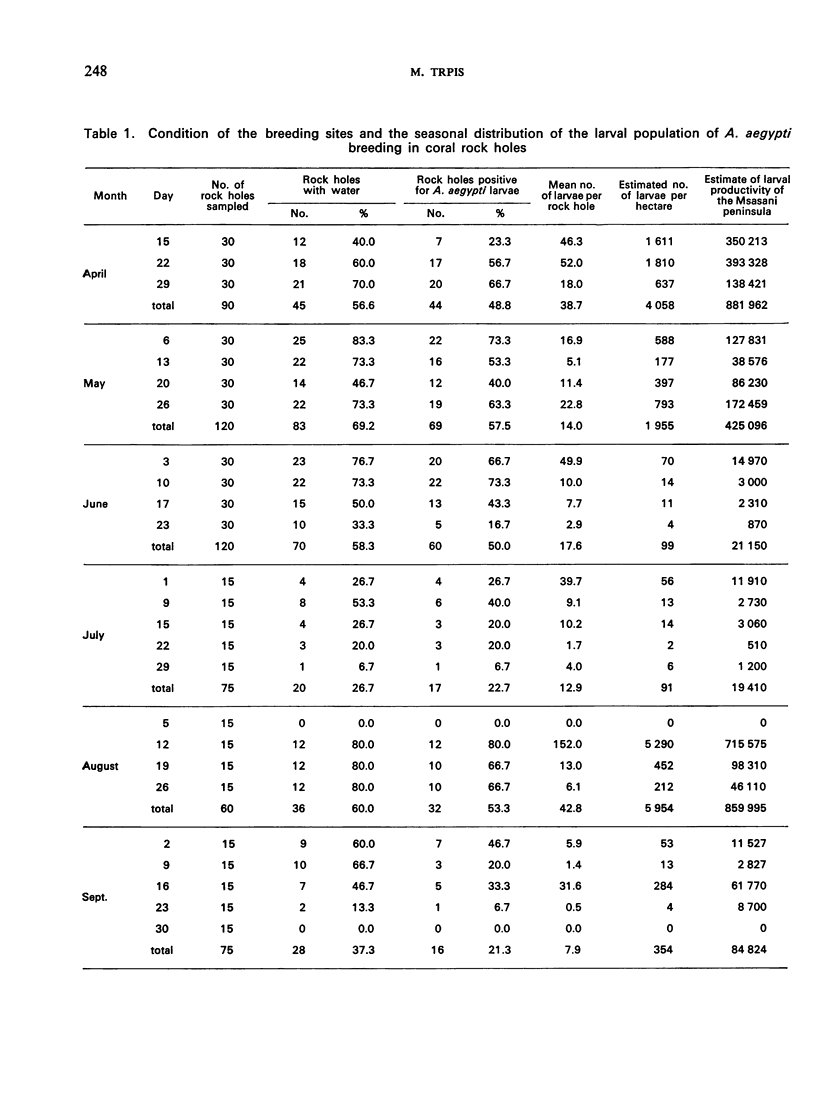
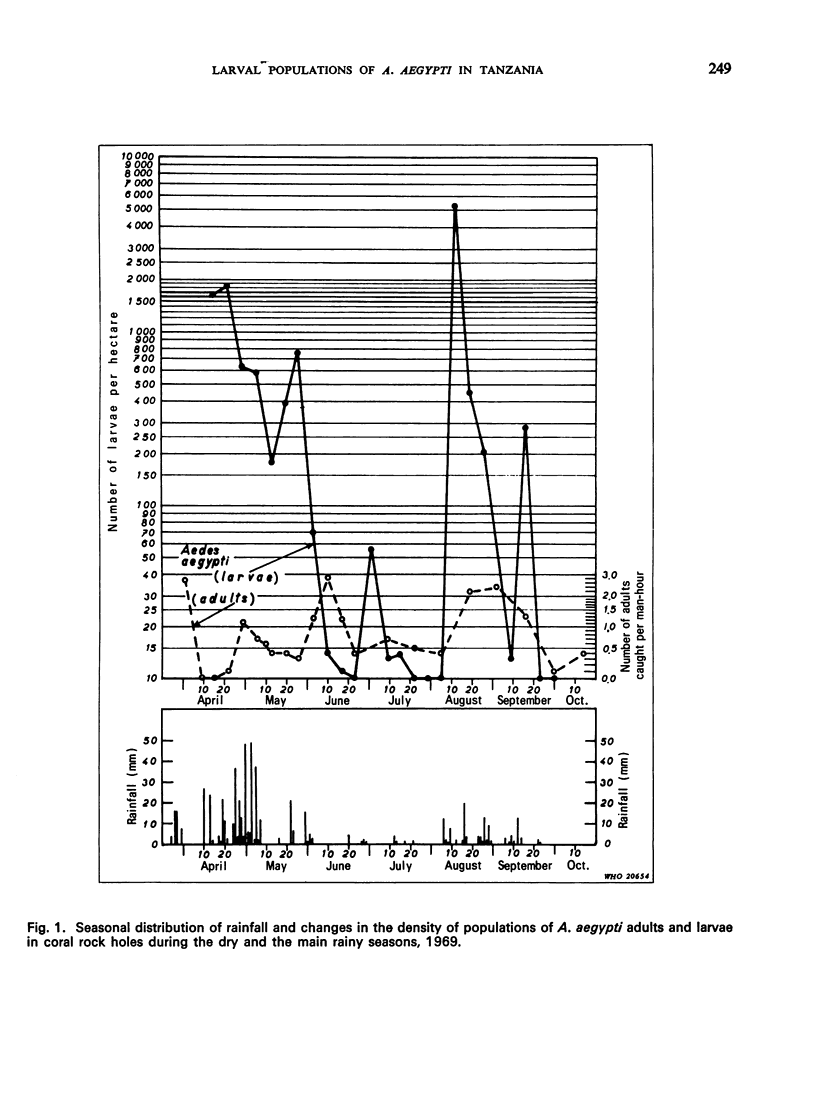
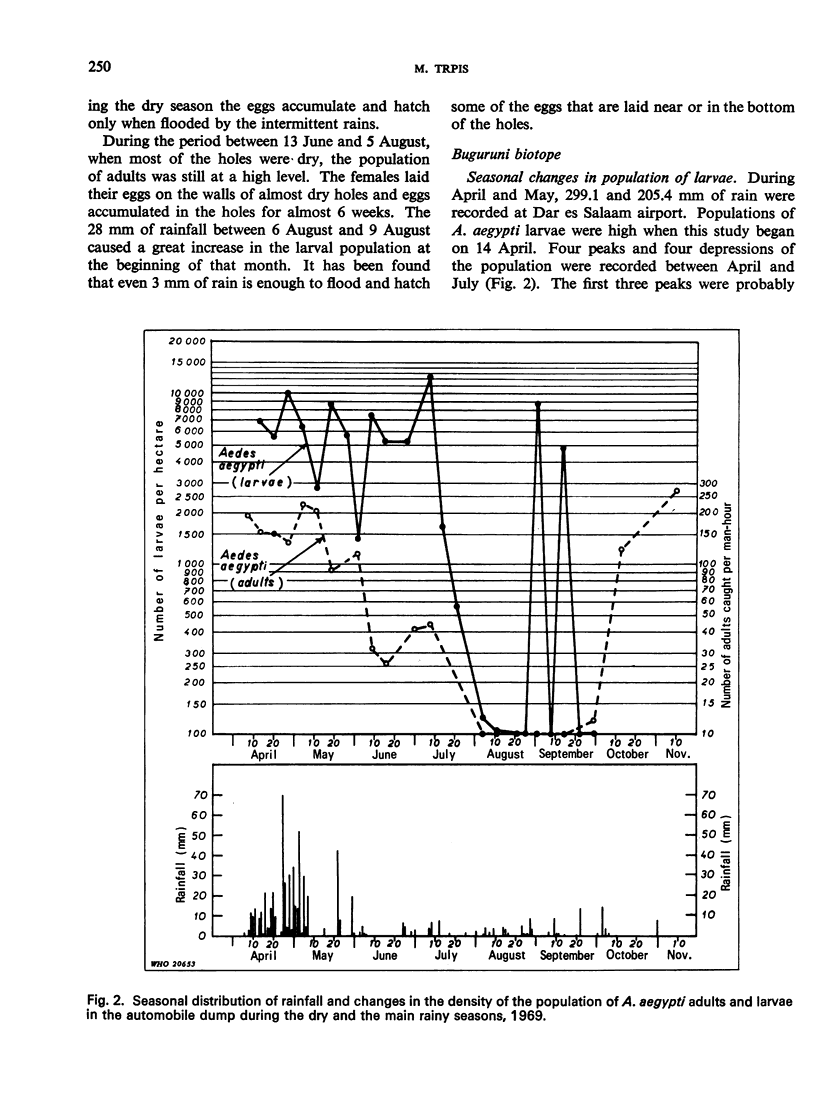
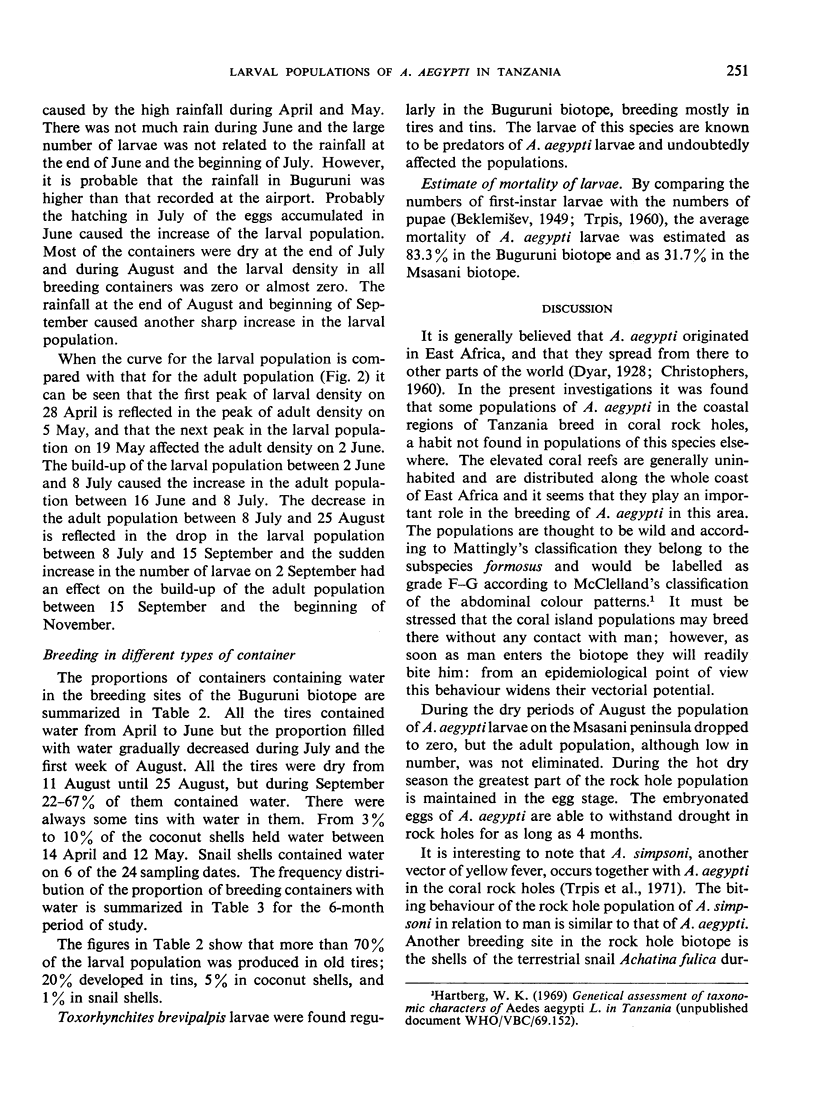
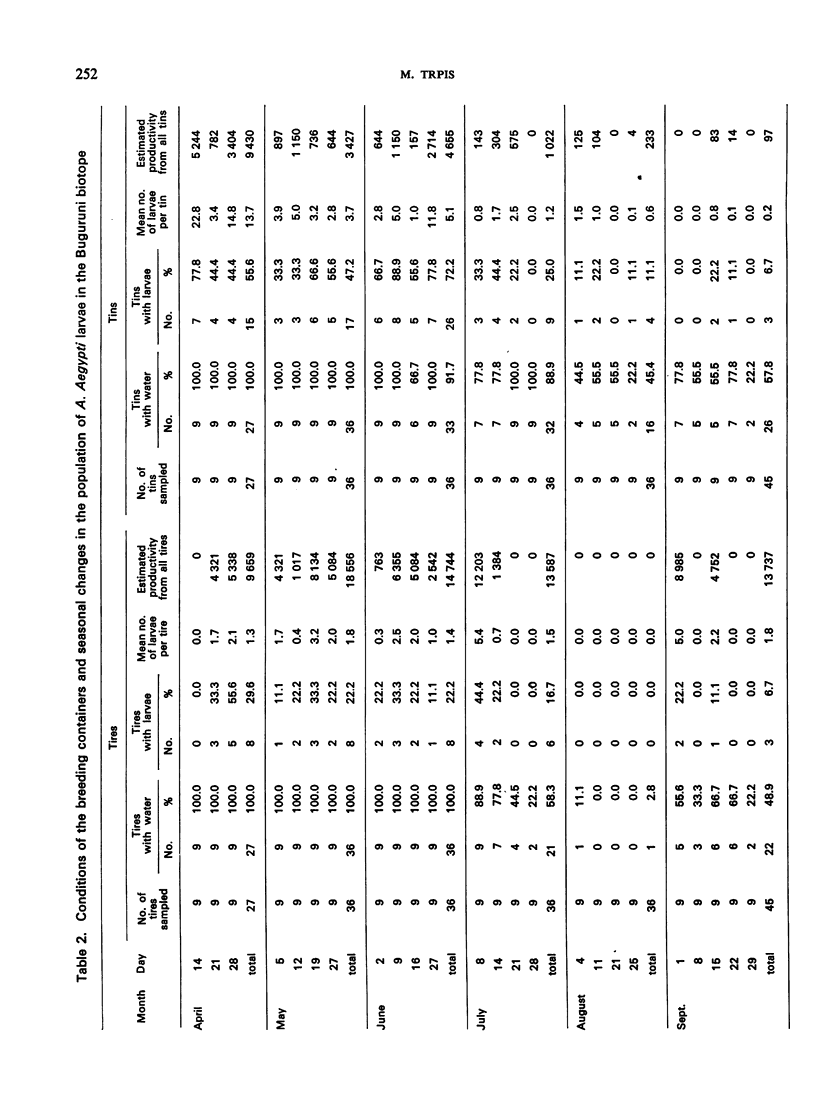
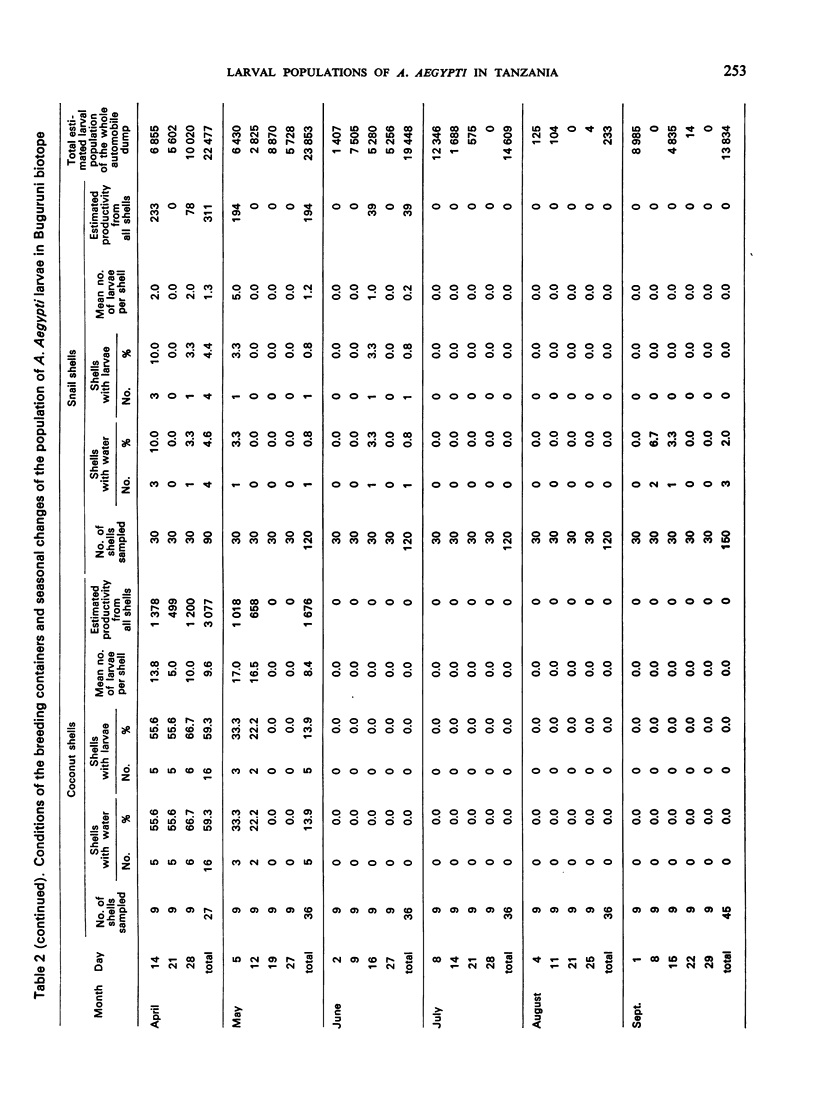
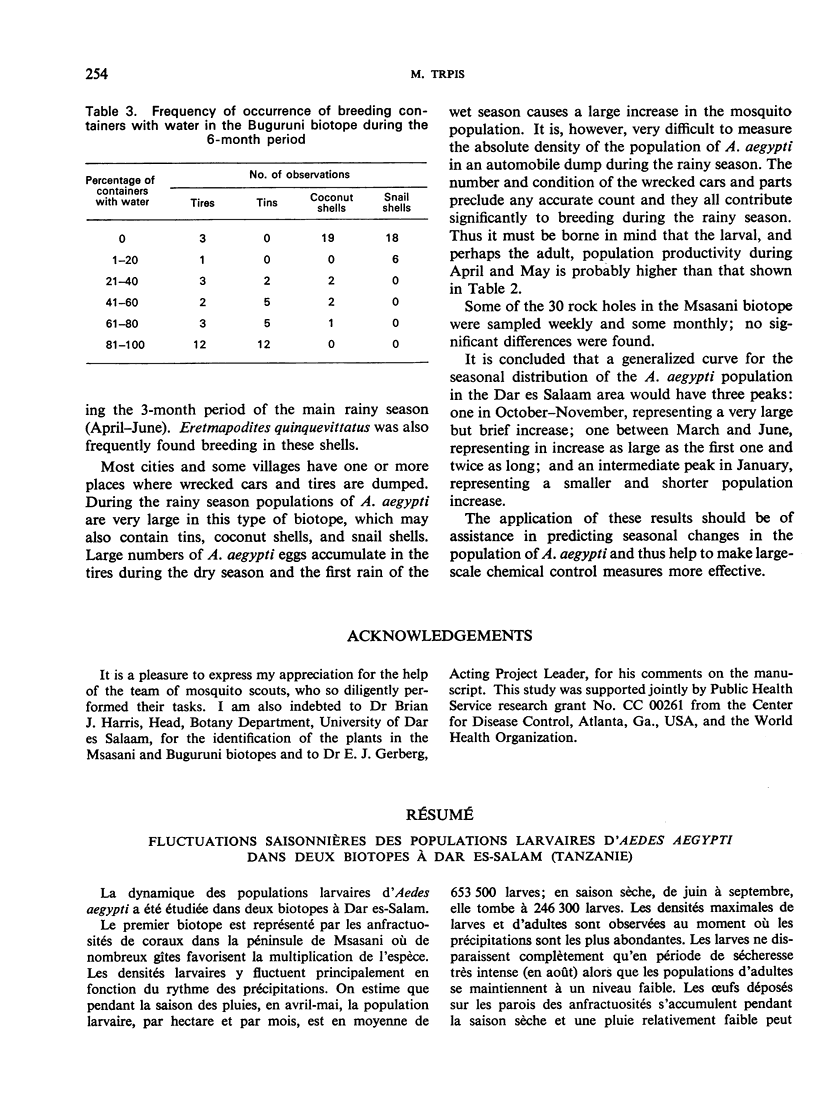
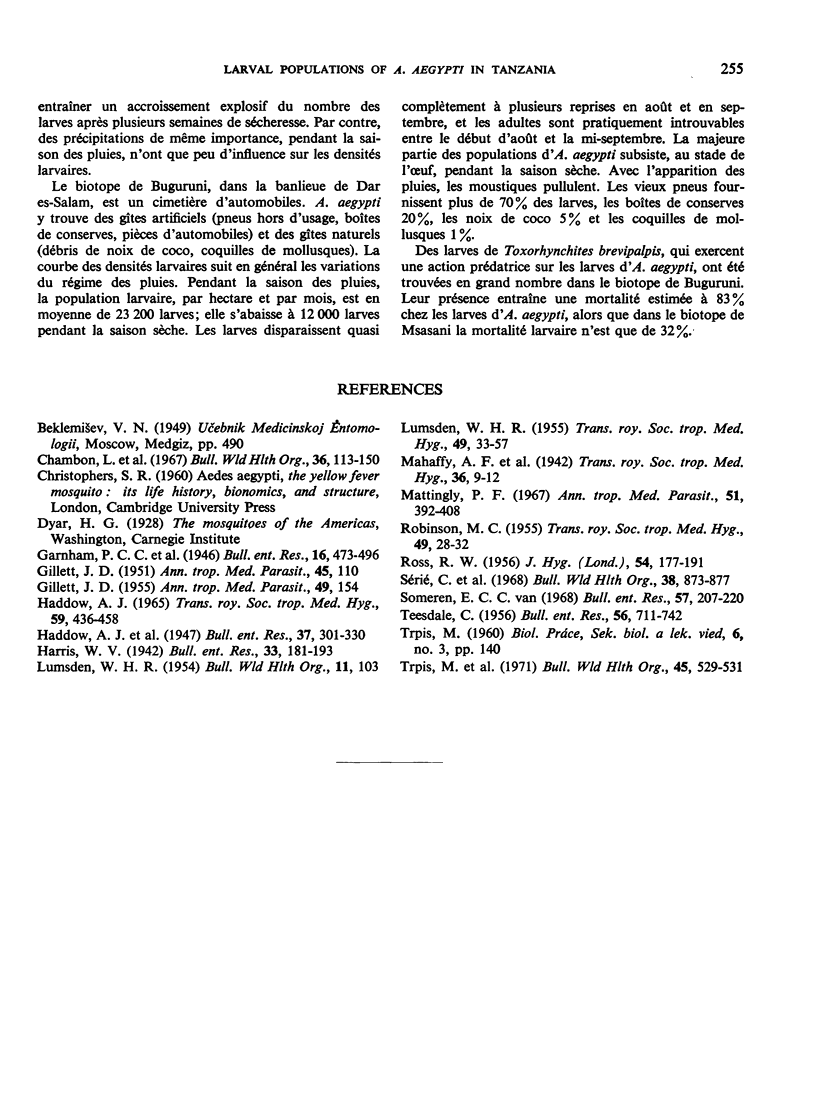
Selected References
These references are in PubMed. This may not be the complete list of references from this article.
- Cunningham van Someren E. C. A check list of the Culicine mosquitos of Tanganyika, with notes on their distribution in the territory. Bull Entomol Res. 1967 Feb;57(2):207–220. doi: 10.1017/s0007485300049932. [DOI] [PubMed] [Google Scholar]
- GILLETT J. D. Further studies on the biting behaviour of Aëdes (Stegomyia) simpsoni Theobald in Uganda. Ann Trop Med Parasitol. 1955 Jun;49(2):154–157. doi: 10.1080/00034983.1955.11685660. [DOI] [PubMed] [Google Scholar]
- GILLETT J. D. The habits of the mosquito Aëdes (Stegomyia) simpsoni Theobald in relation to the epidemiology of yellow fever in Uganda. Ann Trop Med Parasitol. 1951 Sep;45(2):110–121. doi: 10.1080/00034983.1951.11685478. [DOI] [PubMed] [Google Scholar]
- LUMSDEN W. H. An epidemic of virus disease in Southern Province, Tanganyika Territory, in 1952-53. II. General description and epidemiology. Trans R Soc Trop Med Hyg. 1955 Jan;49(1):33–57. doi: 10.1016/0035-9203(55)90081-x. [DOI] [PubMed] [Google Scholar]
- MATTINGLY P. F. Genetical aspects of the Aedes aegypti problem. I. Taxonom: and bionomics. Ann Trop Med Parasitol. 1957 Dec;51(4):392–408. [PubMed] [Google Scholar]
- ROBINSON M. C. An epidemic of virus disease in Southern Province, Tanganyika Territory, in 1952-53. I. Clinical features. Trans R Soc Trop Med Hyg. 1955 Jan;49(1):28–32. doi: 10.1016/0035-9203(55)90080-8. [DOI] [PubMed] [Google Scholar]
- ROSS R. W. The Newala epidemic. III. The virus: isolation, pathogenic properties and relationship to the epidemic. J Hyg (Lond) 1956 Jun;54(2):177–191. doi: 10.1017/s0022172400044442. [DOI] [PMC free article] [PubMed] [Google Scholar]
- SIMPSON D. I., HADDOW A. J., WILLIAMS M. C., WOODALL J. P. YELLOW FEVER IN CENTRAL UGANDA, 1964. IV. INVESTIGATIONS ON BLOOD-SUCKING DIPTERA AND MONKEYS. Trans R Soc Trop Med Hyg. 1965 Jul;59:449–458. doi: 10.1016/0035-9203(65)90065-9. [DOI] [PubMed] [Google Scholar]
- Sérié C., Andral L., Casals J., Williams M. C., Brès P., Neri P. Etudes sur la fièvre jaune en Ethiopie. 5. Isolement de souches virales de vecteurs arthropodes. Bull World Health Organ. 1968;38(6):873–877. [PMC free article] [PubMed] [Google Scholar]
- Trpis M., Hartberg W. K., Teesdale C., McClelland G. A. Aedes aegypti and Aedes simpsoni breeding in coral rock holes on the coast of Tanzania. Bull World Health Organ. 1971;45(4):529–531. [PMC free article] [PubMed] [Google Scholar]


